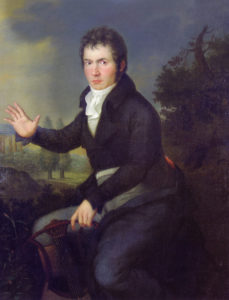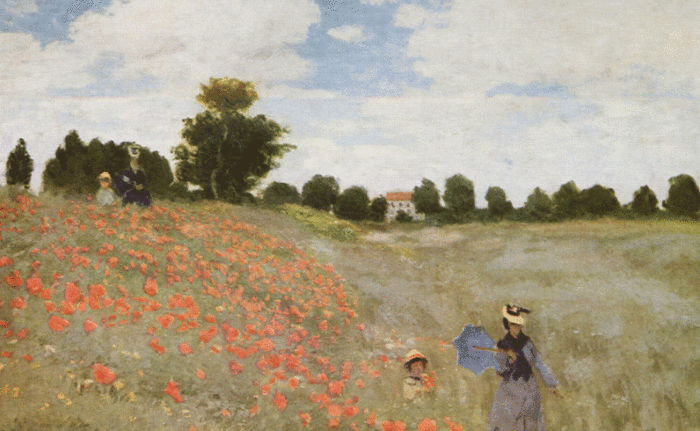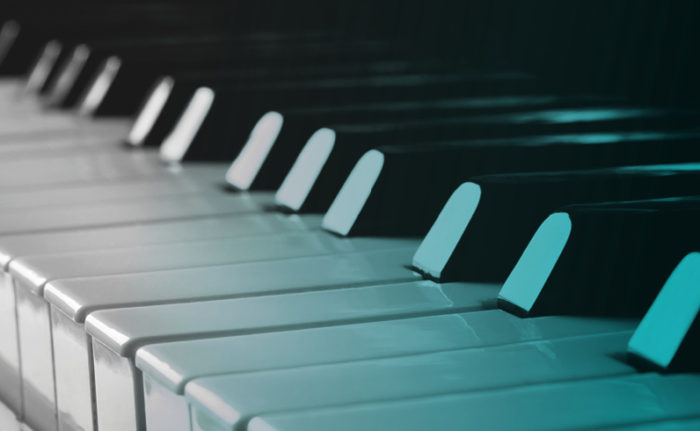On March 15, 16 and 17, classical superstar Joshua Bell returns to the Houston Symphony to play/conduct an all-Beethoven program. In this post, discover Beethoven’s delightful Fourth Symphony, a lighthearted masterpiece full of mischievous musical jokes. Get tickets and more information here.

Though the sketchbook for Beethoven’s Fourth Symphony has been lost, surviving evidence suggests that Beethoven composed this masterpiece during the summer or early autumn of 1806 while staying at the country estate of his patron, Prince Lichnowsky. Shortly after completing his revolutionary Third Symphony, the “Eroica,” Beethoven began sketching his Fifth, a work that expands on the theme of heroic struggle so vividly explored in the Third. He set it aside, however, to write a completely different kind of symphony. Throughout his career, Beethoven liked to work on pairs of contrasting works simultaneously, and in character the Fourth Symphony could not be more different from that of the Third or Fifth.
Instead of an epic journey from darkness to light, Beethoven’s Fourth is a beguiling work full of comedy and enchantment. Several passages look forward to the music Mendelssohn would write to evoke the magical forest of Shakespeare’s A Midsummer Night’s Dream, and throughout the symphony is suffused with a mischievous good humor.
The Music
The symphony begins with a slow, mysterious introduction:
This gloom, however, is soon dispelled by the effervescent theme that begins the main body of the work. An exuberant transition leads to a contrasting second theme, which begins as the woodwinds pass its opening motif from one instrument to another. A third theme is introduced as a cannon between the clarinet and bassoon before an explosive passage brings the first part of the movement to a close.
Minus the slow introduction, these themes are repeated, leading to a developmental section that begins as the music becomes softer and softer. Beautiful, lyrical phrases give way to stormier outbursts, until this frenetic music nearly comes to a standstill. Gradually, fragmentary motifs crescendo to the reprise of the main themes, and the movement concludes with an irresistible coda.
The slow second movement is one of Beethoven’s most singular creations; the rhythmic motif that begins it has been likened to a heartbeat, and its pulse recurs frequently throughout the movement. Combined with the yearning violin melody that follows (marked cantabile—Italian for “singing”), these musical ideas led the renowned music writer Sir George Grove to discern an amorous coloring in the movement. After a vehement transition, a solo clarinet introduces a second cantabile theme. What appears at first to be a variation of the first theme soon becomes a more intense, developmental passage. The opening theme returns as a flute solo, now ornamented with two-note sighing figures. After a reprise of the other main ideas, the movement ends with Beethoven’s most endearing timpani solo.
The outer sections of the impish third movement are full of rhythmic games and sudden changes of mood, while the middle features gentler music for the woodwinds. After the opening section returns, Beethoven surprises audiences with an unexpected turn of events.
The finale is a mirthful romp that begins with an almost impossibly fast, perpetual-motion theme for the violins. A more lyrical theme for woodwinds then leads to an outrageous musical joke. After these main themes are repeated, Beethoven begins the movement’s development by ratcheting the violin’s perpetual motion theme higher and higher. A series of delightfully disorienting modulations leads to a vigorous climax before the main themes of the movement are reprised. Beethoven saves his best jokes for last as this uproarious finale comes to an end. —Calvin Dotsey
Don’t miss Joshua Bell conducting Beethoven’s Fourth Symphony March 15, 16 and 17, 2019! Visit houstonsymphony.org for tickets and more information.
We want to hear from you! Tell us what you think in the comments below.



